Is your Home making you Sick? You may be surprised! Here are 30 possible ways your home may be making you ill, as well as easy fixes for each one of them.
You’ve heard of being home sick, and you’ve probably experienced it too, at some point in your life. However, have you ever considered the fact that your home may actually be making you sick – while you live in it?
I know, it’s a scary thought. The place that is your safe haven from the world, where you can be yourself completely, how can it stab you in the back like that? Well, don’t think so badly of your home – you are the one doing this to yourself!
Sorry to be so harsh, but it’s true – every single thing you bring into your home is either helping you or hurting you – and your family. It’s particularly bad for kids, since their body systems are delicate and still developing. If all this is confusing you and you’re beginning to look at every thing in your home with suspicion now, don’t worry. Here is a list of 30 ways your home may be making you and your family ill, and before you panic, we’ve also got solutions for all of them!
Is your Home making you Sick?
1. Paint
This is probably the biggest factor in ‘home sickness’ – the paint on your walls. Although paint these days are lead-free, if it’s been a while since your home was painted, it’s likely that your paint had lead in it. The WHO has put lead in the list of top 10 chemicals of major public health concern.
When lead paint starts to peel, it emits dust, which gets absorbed into our bodies. Lead poisoning is more serious for young children whose bodies absorb lead more readily. Lead poisoning can cause far reaching adverse effects, impacting all the systems of the body.
The only way to know if your paint has lead is to call a certified building inspector. If you have lead paint, you may have to get rid of it and paint afresh. Another thing to look for in paint is VOCs, or volatile organic compounds, which can cause anything from dizziness and nausea to organ damage and cancer.
2. Humidity
Humidity doesn’t just make your hair look like you had an electric shock, it can also harm your health. Humidity levels above 60% can encourage the growth of pathogens and lead to mold. If there are extended periods of humidity, the mold can spread behind the walls and cause an array of health issues ranging from allergies and sinusitis to nerve damage. And to think that the average humidity in India is 67%, which goes up to 82% during monsoons!
You can measure your humidity levels using an instrument called the hygrometer. Keeping your humidity between 40% and 60% is ideal. Using an air conditioner or dehumidifier can lower humidity levels and prevent the growth of mold. If using a humidifier, make sure to keep it clean by using distilled water, changing the water frequently and draining it completely before storing.
Other ways to lower humidity are to switch on the exhaust when showering and to use an electric chimney or keep windows open when cooking. Clear up water damage as soon as you notice it. It usually appears as peeling paint, warped walls or mineral deposits. You can clean it using diluted bleach, or call in a professional.
3. Air Conditioners
Yes, air conditioners reduce the humidity that cause mold, but they themselves can be the source of other health problems! Air conditioner cooling may cause water to get trapped in the ducts, which then become the ideal breeding ground for mold. It’s difficult to spot these, so the best thing you can do is to get your air conditioner serviced regularly.
If buying a new AC, get one with a HEPA filter that removes small dust particles from the air. Every year or so, get the air ducts properly cleaned by professionals so you can be sure that you’re not circulating polluted air inside your home.
4. Plumbing
You can fix leaky taps and faucets since they’re easily visible. However, it’s the unseen leaks or damaged plumbing that causes the most harm. Slowly but surely, the leaking water accumulates, creating the perfect humid environment for germs and mold. It’s often much later that we realize there is a leak, when we see signs of water damage on our ceilings and walls.
Every once in a while, check your pipes and areas like basements to make sure everything is nice and dry. This will help you catch any early signs of water damage so you can fix it before more harm is done. This may not be a DIY situation – get an experienced plumber to handle the problem.
5. Carpets and Curtains
Curtains can give you that dreamy feel or let you sleep in on the weekends, and carpets feel good under your feet. However, these furnishings are perfect for trapping dust and irritants. Carpets in particular are magnets for all kinds of dirt, pet hair, food residue and impurities.
If you can, get rid of carpeting all together or at least skip wall to wall carpets and choose area rugs instead. Washable cotton rugs are perfect since they are easy to maintain. Other good options are jute, wool or sisal. Avoid synthetic materials like nylon or polypropylene. Thicker rugs feel and look better but require professional cleaning at least a few times a year. Clean your rugs with a vacuum that has a HEPA filter a few times a week.
As for curtains, they often get less attention than carpets. Whenever you vacuum your carpets, give your curtains a once-over too. Wash them frequently in warm water or skip the curtains and get easy to clean blinds instead.
6. Mattresses
Do you wake up every morning with your back hurting? Don’t put it up to old age; it could be your mattress. A good night’s sleep is crucial for our health, although it doesn’t get as much attention as diet or gymming does. Lack of sufficient sleep can lower your immunity, affect your cognitive function and also increase your risk for lifestyle diseases like diabetes and hearat disease.
First of all, make sure your mattress doesn’t contain VOCs or PBDE, a flame retardant used by some manufacturers. The mattress should offer you adequate support, being in line with the natural alignment of your spine. Change your mattress if it’s over 6 years old, is visibly sagging or has noisy springs.
7. Bedding
Along with ensuring your mattress is safe for your health, it’s also important to make sure you’re using quality bedding – and cleaning it regularly. Sheets, quilts, pillows and cushions are magnets for dust mites, microscopic bugs that can aggravate allergies and asthma.
One of the easiest ways to keep dust mites away is to use a mattress protector over your mattress. This doesn’t just protect your mattress, it is also easier to clean than your entire mattress. Vacuum your mattress from time to time. Wash your sheets and pillow covers at least once a week in hot water. If you are prone to allergies, invest in allergy-proof bedding and pillows.
8. Door Mats
You wash your towels every week, but when was the last time you washed your bathroom mat? Yes, I thought so! Bath mats are perfect spots for not just dust mites, but bacteria and mold as well, especially if your mat is in an area that doesn’t let it dry quickly. If multiple people use the same mat, it can also cause the spread of fungal infections like athlete’s foot.
When buying doormats, always go for materials that can be easily washed. Choose cotton for mats inside your home and plastic or rubber for outdoor mats. Wash them once a week in hot water to kill any germs and sun dry them. You can avoid unnecessary dampness by drying yourself completely after a shower.
9. Cleaning Products
Keeping your home clean can reduce the risk of many infections and illnesses, but they can also be the cause of problems if you’re not careful. Cleaning products are made of strong chemicals that need to be used strictly according to instructions, especially materials like ammonia and bleach. Some aerosol cleaners can also give out VOCs and other toxic chemicals.
NEVER, ever mix cleaning products to create your own cocktail. In fact, avoid buying too many cleaners. A solution with dish washing soap, vinegar, lemon and baking soda can clean most surfaces. When using cleaners, wear a face mask and gloves, and keep the windows open. Use the cleaner according to the prescribed dilution and do not make it more concentrated.
10. Combustion Gases
It’s lovely to enter a home and get the smell of freshly made biryani, but it’s important to know that combustion gases can release harmful fumes, like carbon monoxide. These gases can be toxic, especially to young children. Common symptoms of gas poisoning are headaches, nausea and irritation of the eyes, nose and throat.
Avoid using appliances like kerosene heaters indoors. Use an electric chimney hood over your stove, and maintain it by cleaning and servicing regularly. Keep windows open so the room is well ventilated. If any appliance seems to be malfunctioning, get a professional to fix it immediately, rather than trying to do it yourself.
11. Refrigerators
As the holder of all your food – cooked and uncooked – the fridge requires special care. There’s no point in cooking the healthiest dish on the planet only to store it in a filthy fridge teeming with germs! The biggest risk is with the freezer compartment where you store raw meats. Research has found that these freezers are breeding grounds for icky stuff like Salmonella and E.coli.
Keep your fridge functioning well by dusting the coils, if your fridge has them outside. Wipe down spills immediately, and give your fridge a deep clean at least once a month. Avoid overstuffing your fridge and opening it too frequently since it lets it warmer air which can affect the quality of your food inside. When cleaning your fridge, don’t forget the rubber lining on the edges which can attract mold.
12. Dishwashers
When we were cut off from outside help as the pandemic began, many of us resorted to dishwashers to deal with the mountain of dishes at home. While dishwashers do a good job of cleaning your dishes and keeping them germ-free, it’s important to maintain your dishwasher so it can continue to do its job well.
The seal around the dishwasher door can attract black fungus which can be hard to get rid of. If left untreated, it can cause respiratory infections among other illnesses. Check for this mold frequently and scrub it away whenever you see it. A paste of baking soda and vinegar works well for this purpose, and vinegar is a good way to give your dishwasher an overall clean.
13. Small Kitchen Appliances
So we’ve talked about large appliances in your kitchen like the fridge and the dishwasher, but what about the smaller ones like your kettle, coffee maker or blender? A study found that a coffee maker had over 50,000 microorganisms per 10 sq cm, including bacteria, yeast and mold. The challenge with smaller appliances is that it’s harder to reach the nooks and crevices, which can harbor harmful pathogens, especially as they come in direct contact with our food.
To clean your blender, pulse some soap water in it and then wash. Rinse coffee makers’ reservoirs with warm soapy water followed by plain water. Use a small toothbrush to reach corners that tend to get dirty over time. With all appliances, be careful about getting water into the electrical parts.
14. Plastic Containers
Many people around the world are going plastic-free in their kitchens in a bid to help the environment. But what they don’t realize is that they may be actually helping themselves in the process! Plastic containers often contain BPA, which leaches into hot food and can cause health issues like hormone problems, diabetes and even cancer.
Try to use glass or steel containers to store food, or at least go for good quality BPA-free containers. Throw away single use plastic containers or recycle them in other ways. If you bring home food wrapped in plastic, remove the plastic right away and transfer the contents to a food-safe container so you minimize your exposure to harmful chemicals.
15. Drinking Water
Drinking water safety is a major health issue in developing countries, especially in Asia and Africa. The problem isn’t just with unclean water, it’s also about industrial chemicals being present in drinking water. If your drinking water isn’t safe, you are putting yourself and your family at risk for a whole range of diseases.
There are many ways to filter or purify water, and you can choose one based on your needs. There are basic ones made of carbon all the way to sophisticated filters using reverse osmosis or RO. Depending upon the water you get in your area, you’ll need a filter that filters out chemicals and purifies the water to make it suitable for drinking. Make sure to store drinking water in food-safe containers like BPA-free bottles.
16. Kitchen Sponges
What if the very thing you use to clean is transmitting more germs than you’re getting rid of? Well, that sounds crazy, but it can actually be true of your kitchen sponge! Your sponge comes in direct contact with leftover food particles as well as the plates you eat off, so they can get REALLY dirty.
Get rid of your sponge whenever it gets scraggly, and in the meantime you can clean it simply by microwaving it for 2 minutes. Another solution is to soak it for 30 minutes in an oxygen bleach solution and rinsing and drying thoroughly before use. It helps to know that synthetic sponges are easier to clean than natural sponges which tend to be more porous.
17. Cutting Boards
Cutting boards are something we use every single day in our kitchen, multiple times a day. Depending upon the type of board you use, it can be packed with all kinds of bacteria like E. coli that can cause food borne diseases. Another thing to look out for is that some cutting boards use formaldehyde glue which can be harmful to health.
All cutting boards have their pros and cons, and at the end of the day what’s important is to have separate cutting boards for raw meat and vegetables. Besides washing your cutting boards every day, disinfect them once a week by soaking them in a diluted vinegar solution for 30 minutes. Replace them if they have too many grooves or cuts since they can trap food particles and breed bacteria.
18. Ladles and Spatulas
Admit it, you have a favorite spatula you use all the time! Well, your favorite spatula may be contaminated with all kinds of unpleasant things like E.Coli, yeast and mold. This applies to all kinds of spatulas, including rubber and wooden. If you continue to use contaminated spatulas to cook your food, you’re only passing on germs to the whole family.
If your spatula is made of two parts, wash them separately and let them dry completely before assembling it again. Use hot soapy water to wash your spatulas and ladles, taking care to get rid of stuck on food particles, especially in the area the handle meets the spatula.
19. Remote Controls
Think of the last time you cleaned your remote control. Can’t remember? Well, you’re not alone! A study that analyzed the remote controls in the homes of several families found that 81% of the families had bacteria and mold on their remote controls. A large percentage also had yeast and other germs on their keyboards and game controllers. And to think we touch these with our bare hands everyday!
Use a sanitizing wipe to clean your remote controls, keyboards and game controllers at regular intervals. If the remote gets used everyday, it may need to be cleaned more often than the other deices. Try to get in between the buttons and crevices to make sure they’re completely free from dust, skin cells or food particles.
20. Doors and Handles
What is the most touched item in your home? It’s got to be a door handle! We were advised about being careful when touching public door handles as the pandemic began, but it’s important to keep a check on the handles in our homes too. A study found that door handles and knobs contain a whole list of germs. This also includes cabinet doors, stove knobs, refrigerator and microwave handles.
Since the whole family uses these handles every day, any pathogen can be easily transmitted. Use a sanitizing wipe to wipe down handles and knobs frequently – maybe every day in the kitchen since they tend to be the dirtiest. Once a week use a disinfectant solution and clean cloth to wipe everything down in the house.
21. Toys
When you think of toys being a hazard, the first thing that comes to mind is probably Lego bricks on the floor! Yes, those are super painful, but there are other ways in which toys can hurt your health. Kids usually carry their toys from one part of the house to another, carrying dust, germs, skin cells and food particles with them.
The worst offenders are definitely soft toys, which are complete dust magnets. If your child is prone to allergies or asthma, avoid stuffed toys altogether. Wash them regularly in warm soapy water – most toys can be washed in the washing machine. If you worry about eyes or parts falling out, put the toy in a pillow case and then wash.
22. Shoes
It’s obvious that shoes contain all kinds of dirt, but did you know that 96% of that is fecal matter? Yes, it is gross! That’s why it’s advisable to leave your shoes outside your house when you enter. Most Indians do follow this, but sometimes we let small kids walk in with their shoes, and let’s face it – kids love stomping in the dirtiest places!
Latest studies show that shoes may even bring in the coronavirus along with other germs. So keep a shoe rack at your entrance so you can keep your shoes contained and away from your home. Encourage family members to wash their hands with soap and water soon after taking off their shoes.
23. Bathrooms
When you clean your toilet a few times a week and flush after use, you think you’ve taken care of the basics. However, you may be forgetting the things lying near the toilet. Every time you flush, tiny particles from the toilet water become airborne and land on other things – like your toothbrush! Eww!
So teach everyone to close the toilet bowl before flushing, so what’s inside the bowl stays inside! Another hazard to consider in bathrooms is the risk of falls, especially for the elderly. Go for bathroom floor tiles that aren’t completely smooth and offer some friction to prevent slipping. Have stabilizing bars so older people can hold on to them for balance.
24. Laundry
Your washing machine cleans your clothes, but is the machine itself clean? Consider the dirt from all the clothes you’ve washed in your washer till today. Now imagine that dirt getting embedded in the nooks and crannies of the machine. It’s not just disgusting, it’s transfers all those germs to the next load of laundry.
Avoid this by cleaning your machine time to time. You can use a descaler meant for your machine, or simply run a cycle with diluted bleach to sanitize the inside completely. Another thing to consider is your laundry detergent. Many detergents have strong chemicals that can transfer to your clothes and cause skin issues or allergies. Choose a laundry detergent that’s made of natural materials, and if you have extremely sensitive skin a baby-friendly detergent may work for lightly soiled clothes.
25. Light Bulbs
How on earth can your light bulb hurt your health? Unless we’re talking about electricity bills! Well, many light bulbs we use today emit UV light in the UVA range. While this is not the kind of light that causes sunburn, it can cause discoloration of the skin and damage it over time.
Replace your old light bulbs with LED lamps that are low on UV emission. Most fluorescent lights do emit UV light, especially if they claim to be energy efficient. Keep such lamps at a distance so the light does not directly fall on you.
26. Pets
Okay, now it’s getting too much – my pet is making me sick? I know that’s a rather unpleasant thought, but there are a few hard facts that we need to think about. Pet dander is a major cause for allergies and asthma attacks in many people. Pet dander refers to tiny flecks of skin shed by birds and animals, which can settle on furniture and things in your home.
If you are at risk for asthma or allergies, it’s safest to keep your pets outside your home, or at least don’t let them in your bedroom. If you have pets indoors, you need to vacuum regularly, almost every day since pets shed a lot. Brush your pet and keep them well groomed so the shedding is kept to a minimum. Another thing to remember is to handle your pet’s utensils and toys with care, washing your hands well afterwards. Never let an animal lick open wounds on your body or your face.
27. Air Fresheners
We all want our homes to smell great, and we try to achieve this with incense sticks, scented candles, pot pourri and other air fresheners. Unfortunately, just as they spread the fragrance around, they may also be spreading chemicals like phthalates and other tiny particles that can get into our respiratory systems and cause problems. Another problem is lead, found in some scented candles.
If you’re buying candles or incense sticks, get them from reliable brands and check the ingredient list carefully. You can always opt for diffusers with diluted essential oils, provided you get the oils from a responsible source. Avoid using such air fresheners around babies, pregnant women and young children.
28. Pests
This isn’t new information – cockroaches are disease-spreaders and need to be eradicated from our homes. But do you know why? It’s because they shed parts of their bodies and poop everywhere and all this can get on our furnishings and furniture and even in the air. Breathing this in can trigger allergies and respiratory issues.
The best way to keep cockroaches away is to keep your home spick and span. Clean up spills and sweep up crumbs as soon as you spot them. Keep dustbins covered and take out the trash everyday. Keep all food stored in airtight containers. Seal any cracks in your walls, floor or tiles to prevent them from entering. If you have a serious infestation, you may need to call in pest control to fix it.
29. Pesticides
When the pandemic began, many of us brought home plants and we’ve got attached to them. That’s great, and plants have many beneficial effects on our health. However, if you use chemical pesticides on them, you may be hurting yourself and your family. Pesticides can cause all kinds of serious illnesses like reproductive issues and even cancer.
Instead of using chemical pesticides, use natural ideas made from garlic, cloves or other organic materials. You can also find all natural pesticides in gardening stores, if you really need to protect your plants from pests.
30. Over Cleaning
Wait, we’ve been talking all day about how is your home making you sick, and now you tell me that we’re cleaning too much? Well this doesn’t apply to regular dusting or vacuuming – we’re talking about using too much of sanitizer and anti bacterial sprays. Yes, we’re in the middle of a pandemic, and we need to use sanitizer, but it’s the overuse that’s the problem.
Most antibacterial cleaners contain triclosan, which can have harmful effects on the body. Soap and water is good enough for most germs, and overuse of anti bacterial solutions can lead to the rise of super bugs that can’t be killed by anything.
In addition to these, here are a few more tips to stay healthy while at home:
- Ensure your spaces are well ventilated by keeping windows open
- Let sunlight in during the day
- At certain times, like pollen season or when pollution is high, keep windows closed
- Use exhaust fans wherever available
- Keep indoor plants that purify the air naturally
The next time you buy something for your home, take all these factors into account. This will help you choose the item that is the healthiest for your family. As you do this over time, you’ll have a home that actually improves your health and you can stop wondering: Is your home making you sick?
I am taking my blog to the next level with Blogchatter’s #MyFriendAlexa.

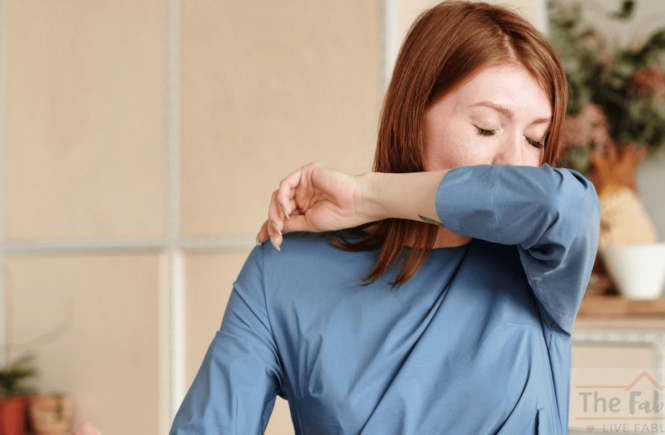
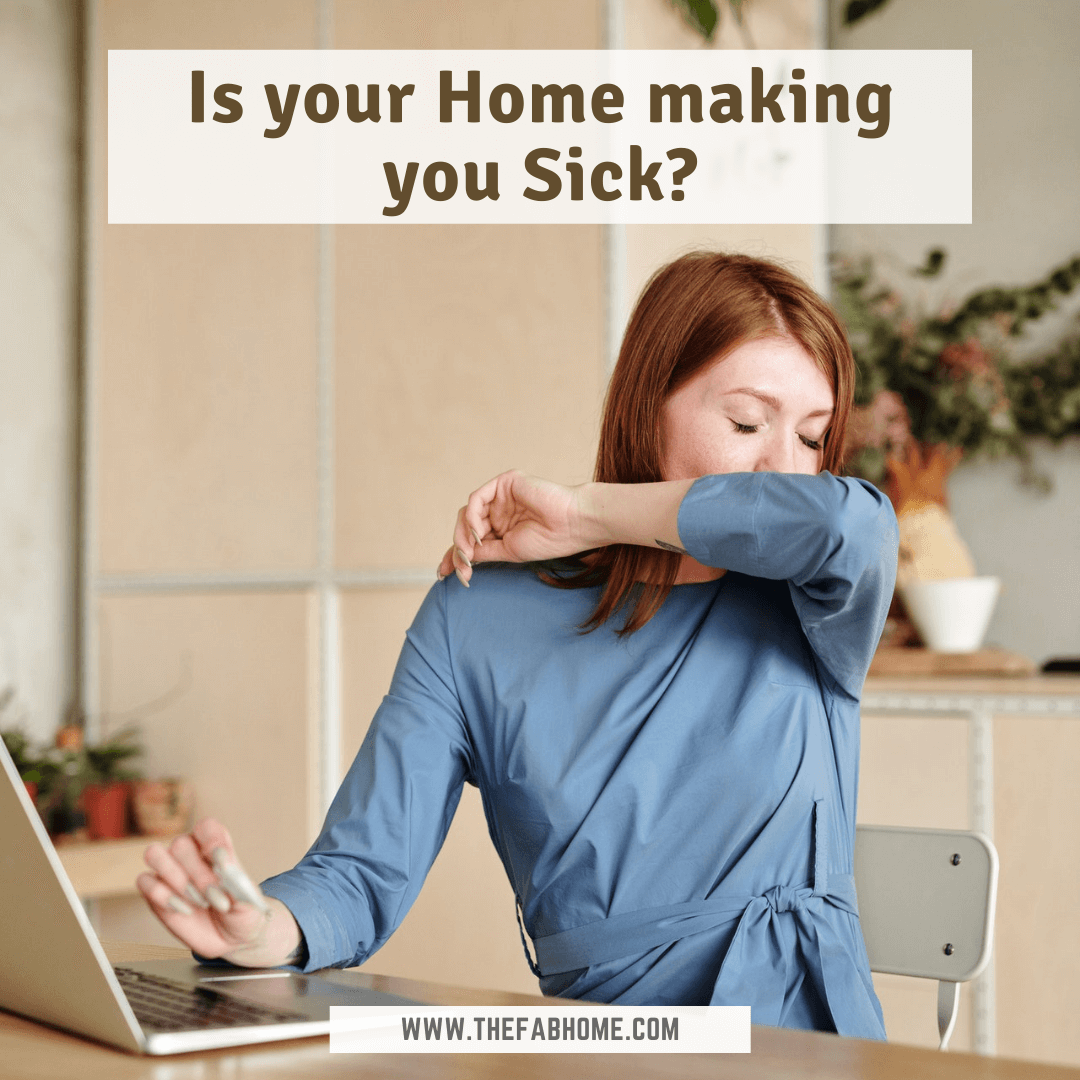






























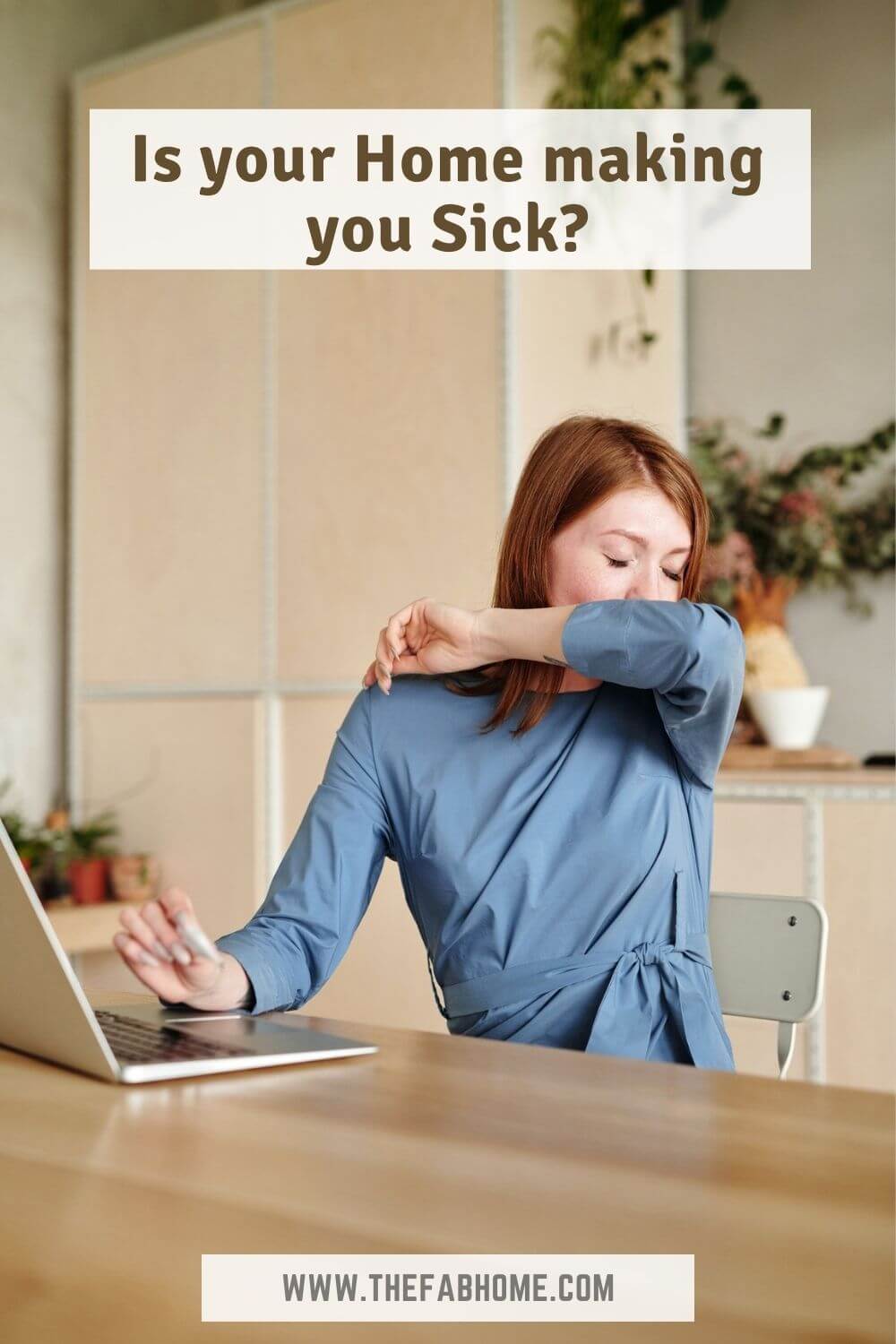

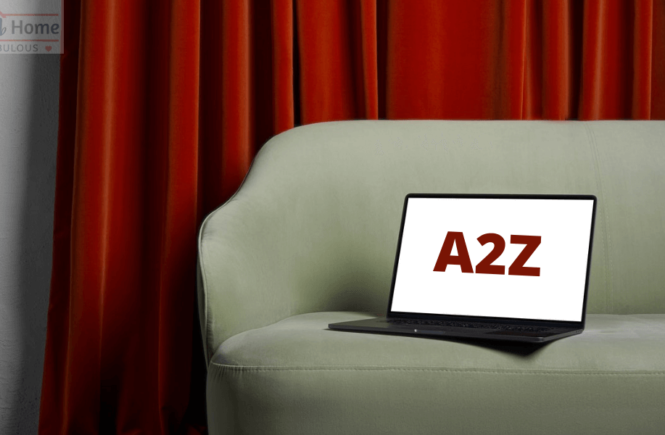
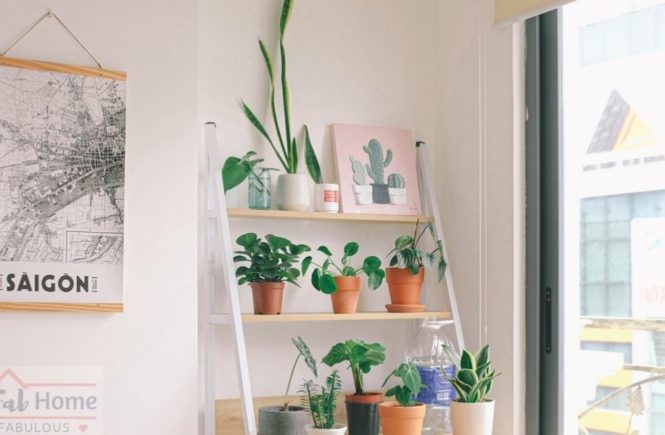
1 Comment
I ahve been recently diagnosed with allergy and sinus due to damp and dust inside house